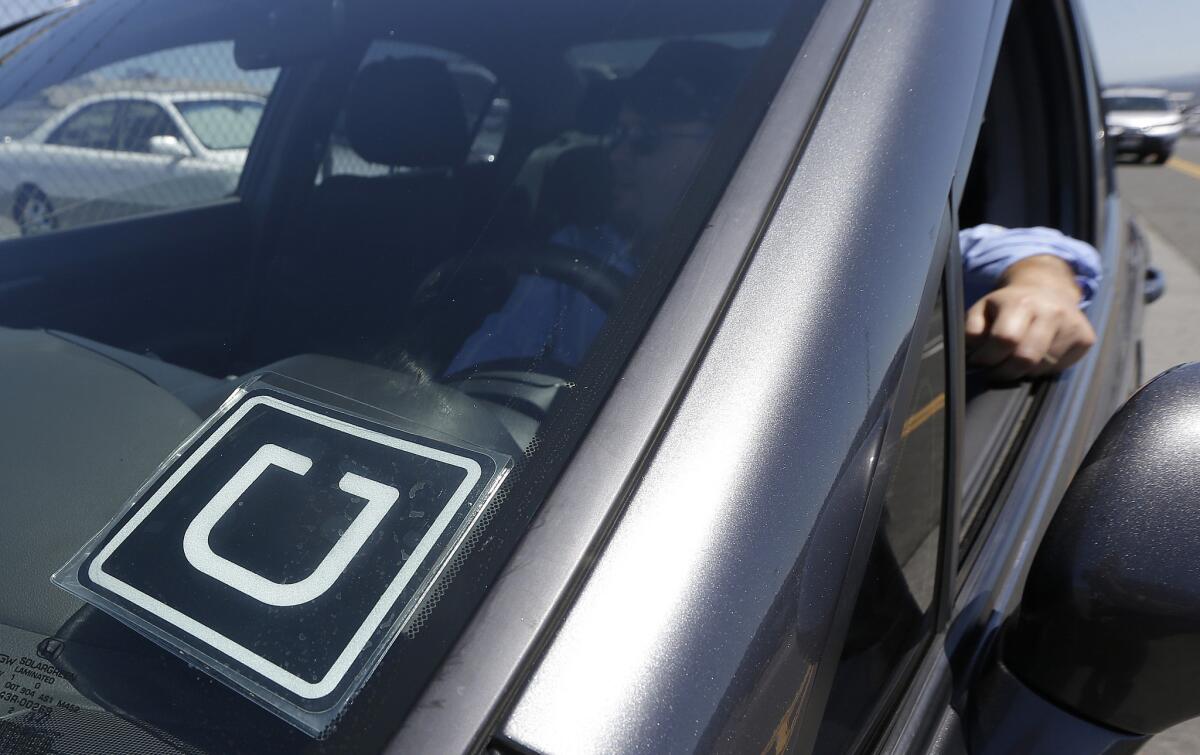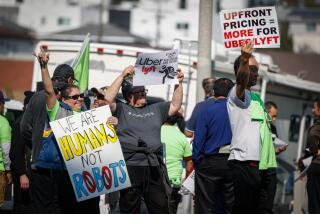Uber says drivers are happier than ever, but not everyoneâs convinced

Uberâs latest driver survey found that the majority of driver partners are satisfied with the service.
A new Uber driver survey released Monday reveals that Uber drivers are the most satisfied theyâve ever been. But some drivers and analysts are skeptical of the findings.
The survey, conducted in November by Benenson Strategy Group â the same group that conducted the 2014 survey â included interviews with 833 drivers from 24 of Uberâs largest markets including Los Angeles, San Francisco, Chicago and New York City.
Although the sample may seem small given that the company had 327,000 active drivers in the U.S. as of October, an Uber spokesman said the number of drivers interviewed is in line with typical polling samples for its driver population.
The survey found that 81% of polled drivers said they were satisfied with the overall experience of driving for Uber â up from 78% the previous year. Ninety-seven percent said they were satisfied with the flexibility of their schedule, and 91% said they were satisfied with their ability to balance their work with Uber and the rest of their lives.
But while the results suggest thereâs never been a better time to drive for Uber, Harry Campbell, an Uber driver and founder of The Rideshare Guy â a website and community where Uber and Lyft drivers come together to share best practices and experiences â said itâs important to approach Uberâs numbers with a healthy dose of skepticism.
âI would say right off the bat that Iâm not surprised Uber released a study that said their drivers are more happy or satisfied, because it wouldnât make sense for them to release a survey that didnât say that,â said Campbell, who has driven for Uber and its competitor Lyft for the last year and a half.
âIn the past, theyâve released earnings for drivers that didnât take into account driversâ expenses, for example,â he said. âTheyâre going to release data thatâs most beneficial for them. They havenât always been the most forthcoming.â
Campbell said he also wasnât surprised to hear that drivers reported satisfaction with the flexibility of their schedules, because flexibility has always been a draw for services in the on-demand economy. According to Campbell, itâs what attracts drivers to services such as Lyft, Sidecar, and on-demand delivery platforms like DoorDash and Postmates.
But reports of overall driver satisfaction being up from the previous year did come as a surprise to him, because âa lot of issues from the past year still exist today and still havenât been addressed,â he said. âSo Iâd be interested to know who they surveyed.â
According to Campbell, anecdotally, many drivers have grown increasingly dissatisfied with Uberâs lowering of fares, which, while good for passengers, has cut into driversâ take-home pay.
Market saturation has been another sticking point, with drivers struggling to get as many passengers as they used to because there are now so many Uber drivers on the road.
Tipping has also been a controversial issue for Uber (passengers do not have the ability to tip drivers through the app), and drivers have long complained on community forums and Facebook groups about how hard it is to get support from Uber.
âOne of the most popular articles on my site is on how to contact Uber,â said Campbell, whose site recently crossed 500,000 monthly views. âThey donât have a phone number drivers can call, even in an emergency.â
For Uberâs part, the ride-hailing company said the purpose of the survey is to help it identify areas it can improve, and get a better understanding of its driversâ profiles.
A spokeswoman for the company said Uber frequently asks its driver partners for feedback, which has led to the creation of Partner Support Centers â physical locations where drivers can drop in for support; the launch of the Momentum program, which offers drivers fuel discounts and reduced vehicle maintenance costs; and discounts on cellphone services.
Uber declined to release the survey questions.
Thilo Koslowski, vice president and automotive practice leader of research firm Gartner, said he can see another reason surveys like the one most recently conducted could be important to Uber: Itâs a way to get more people to consider driving for the San Francisco company.
âIt might be even more important now than in the past,â Koslowski said, âbecause potential drivers are beginning to question how lucrative it is to drive for Uber.â
In that sense, Koslowski said, Uber can use the survey findings as external advertising to better direct its messaging.
âUber is also learning what works and what doesnât work, and these surveys can certainly help,â he said. âBut if theyâre used as just a tool to portray a happy world, then I donât think theyâd meet their objectives or help anyone.â
Twitter: @traceylien
ALSO
Orbital ATK launches supplies to International Space Station
San Bernardino shooting: Does blanket TV coverage change minds?







